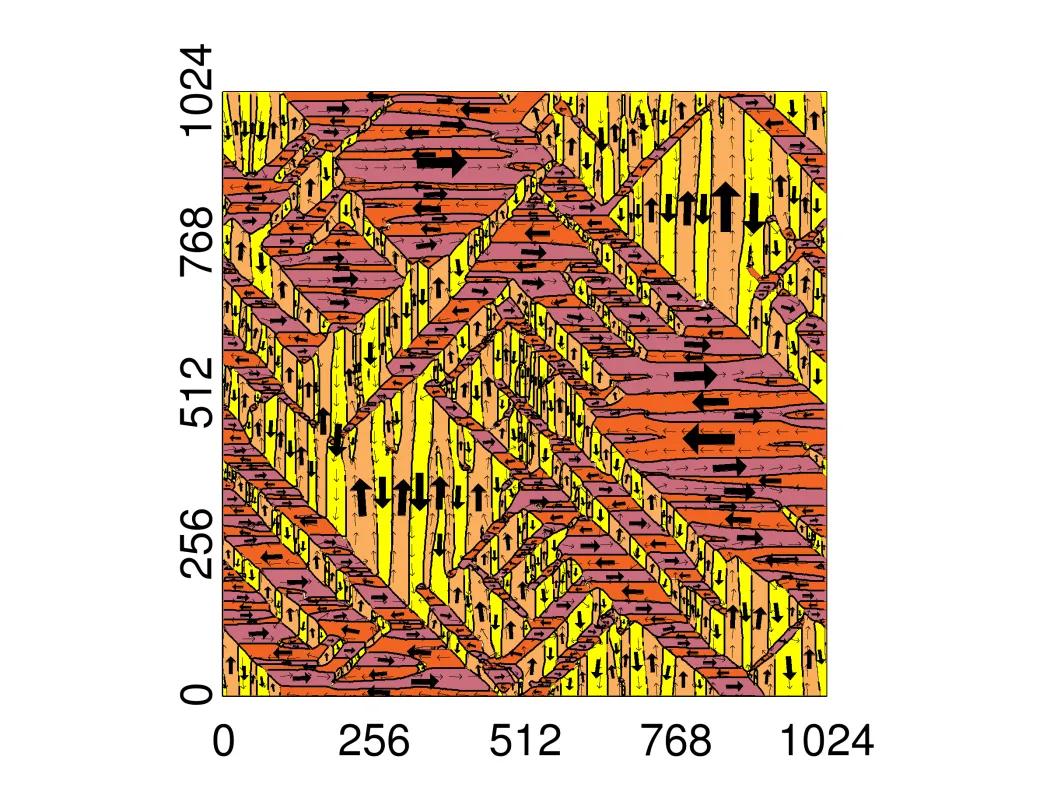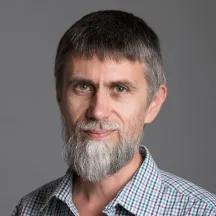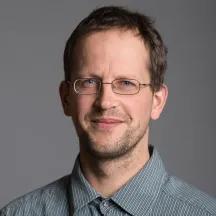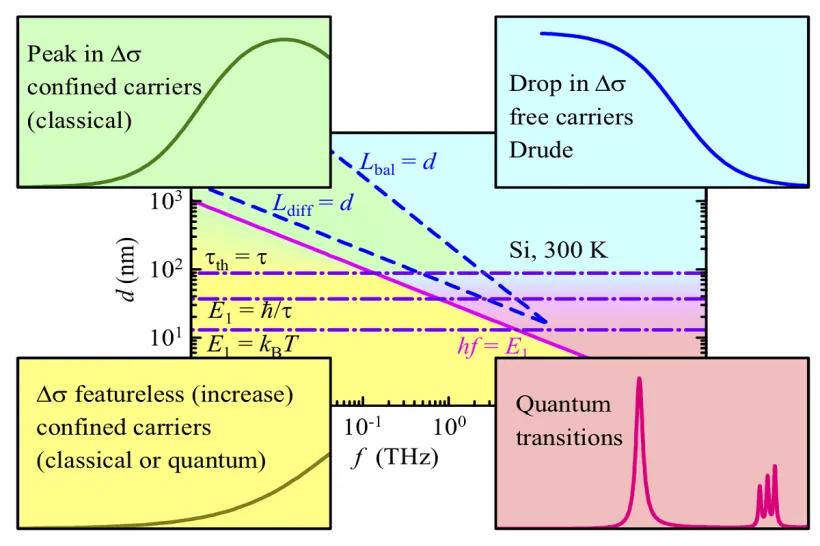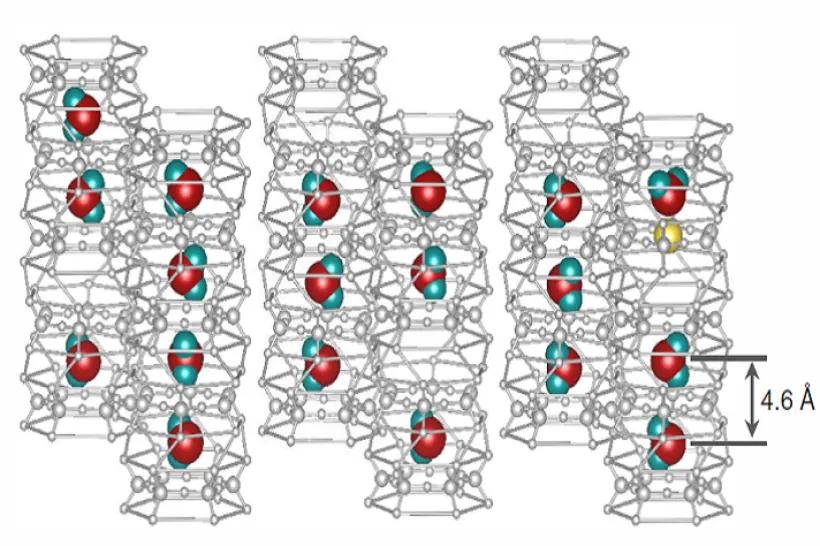The ferroelectrics host spontaneous ferroelectric polarization, which can be switched between several equivalent directions. As the polarization is usually strongly coupled to mechanical deformation, the switchichg can be achieved by either electic field or by application of pressure. The switching of polarization is a key ingredient in their large dielectric and piezoelectric response, which find utility in vast number of applications related to actuation and sensing.
The existence of several equivalent polarization states leads to appearance of the ferroelectric domain structure, a pattern formed by regions of approximately homogeneous polarization state and interfaces between them (see figure). The switching depends strongly on properties of the interfaces, in particular on their ability to move.
Ferroelectric order only exists below the Currie temperature, and the material can undergo several transitions between diffent phases upon further cooling, with the electromechanical properties usually strongly elevated in the vicinity of transitions. Another way of achieving elevated properties is tuning chemical composition in solid solutions of multiple ferroelectrics, which might give rise to a region of morphotropic phase boundary (MPB), where two symmetry variants of the material are very close to each other. The MPB materials exhibit better stability of properties in devices which operate in a wide temperature range. Finally, the materials can be brought towards phase transition using suitable electro/mechanical conditions, such as hydrostatic pressure or epitaxial strain in thin films.
Phase transitions, presence of complicated domain structures, domain interfaces with properties depending on local (defect) chemistry makes the materials challenging experimentally as well as theoretically, and yet, understanding them is a crucial prerequisite for full exploitation of their exceptional properties.
In a close collaboration with experimentalists we investigate structural properties of ferroelectrics, target their dynamics, study domain structures and their impact on material properties, and even consider properties of domain-engineered patterns. Our tools range from first-principles calculations of intrinsic material properties, through atomic-level empirical-potential-based simulations up the phenomenological Landau-Ginzburg-Devonshire (LGD) theory for ferroelectrics. We have strong background in application of the LGD theory to investigate properties and details of the domain interfaces using analytical calculations. To deal with complex domain structures we developed and maintain a computer code ferrodo, which allows for time-dependent phase-field simulation of ferroelectric-domain-structure evolution within the framework of the GLD model. Ourselves, we develop parametrizations of the GLD models for ferroelectrics of interest.
We are also active in the field of epitaxially grown structures. These are e.g. thin films as well heterostructures, which are composed of layers of multiple different materials forming periodic superstructure. The strain mismatch between film and substrate or between layers of the superstructure profoundly changes properties of the ferroelectric part. Recent advances in techniques of epitaxy allowed for unprecendented precision of deposition with possibility to control number of atomic layers. This leads to emergence of self-assembled domain nanostructures, which are of strong interest of the scientific community, us notwithstanding.
